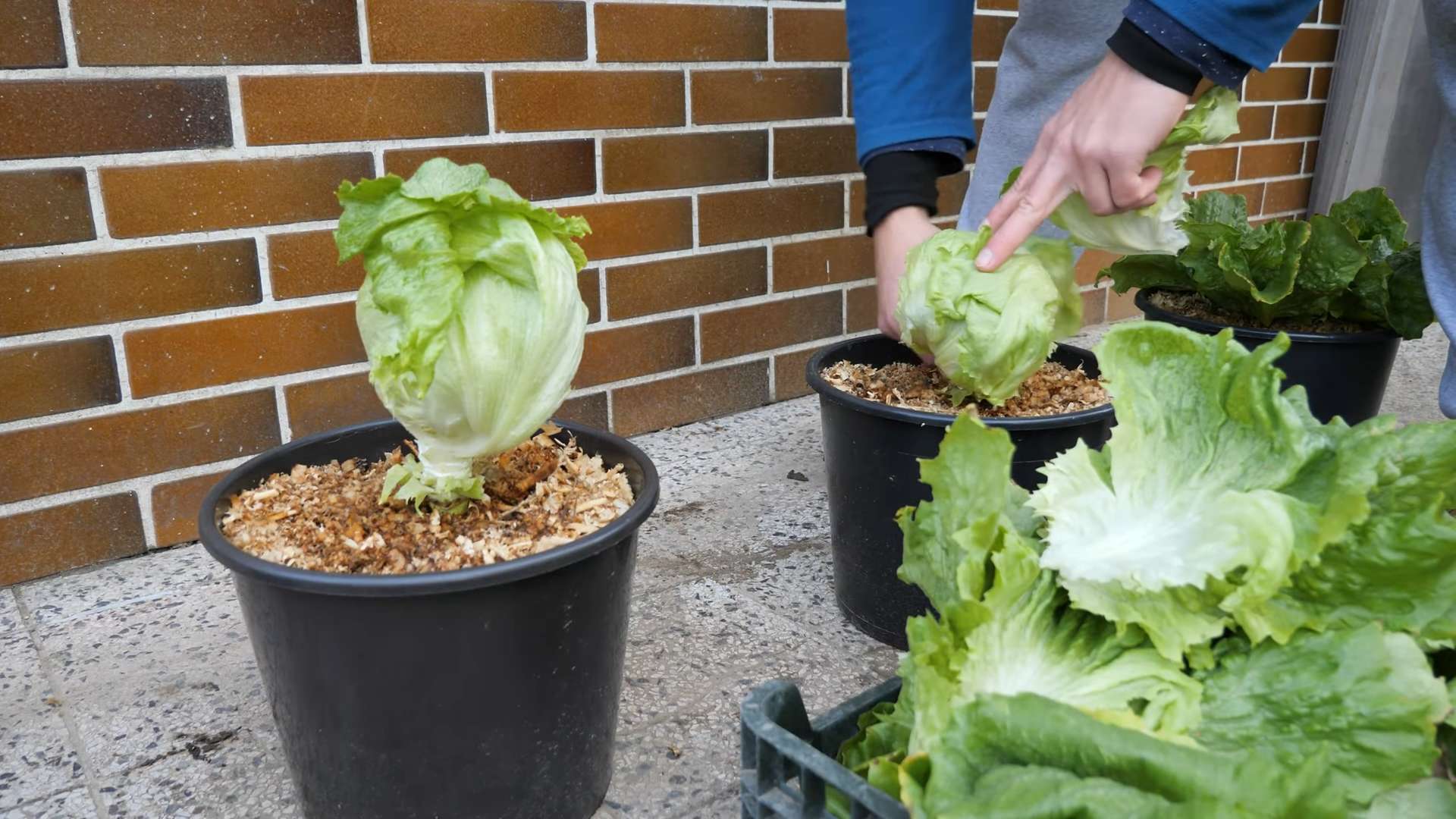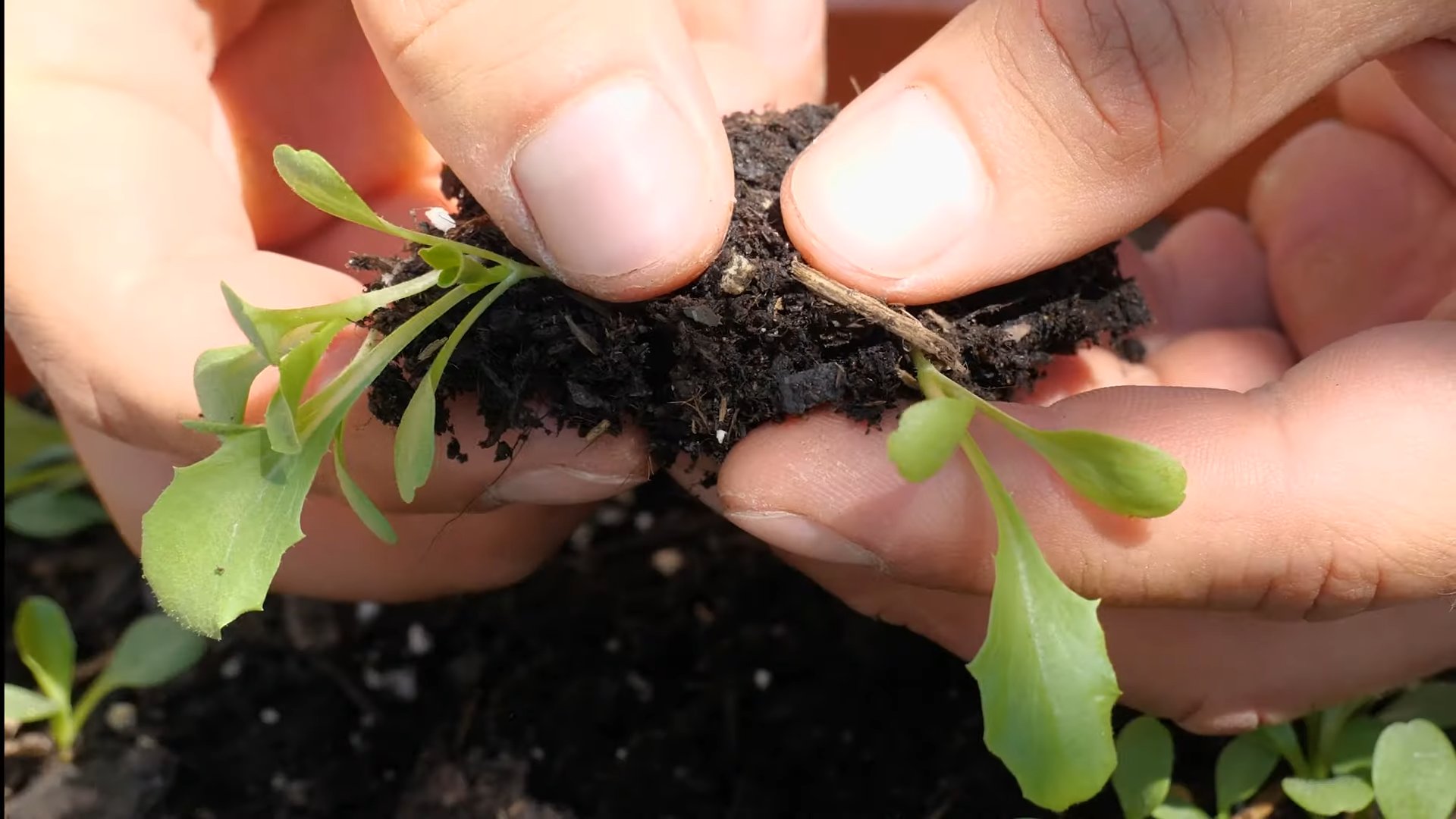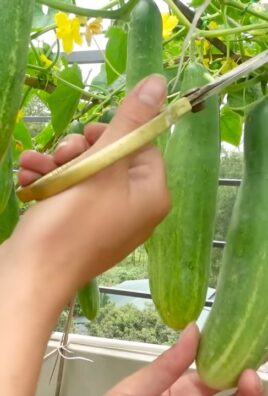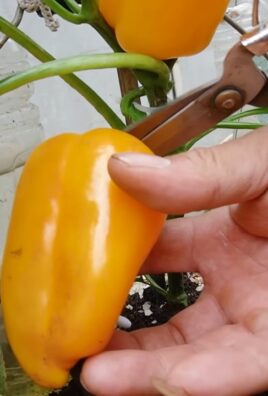Growing Iceberg Lettuce at home might seem like a challenge reserved for seasoned gardeners, but I’m here to tell you it’s totally achievable, even for beginners! Forget those limp, overpriced heads at the grocery store. Imagine crisp, refreshing lettuce, bursting with flavor, picked fresh from your own backyard. Sounds good, right?
For generations, cultivating lettuce has been a cornerstone of home gardens. From ancient Egyptians who first cultivated lettuce for its seeds and oil to the Romans who enjoyed its leafy greens, this humble vegetable has a rich history. Today, we’re not just growing food; we’re connecting with a tradition that spans millennia.
Why bother with the effort? Well, for starters, store-bought lettuce often travels long distances, losing freshness and nutrients along the way. Plus, you have complete control over what goes into your garden, ensuring your growing iceberg lettuce is free from harmful pesticides and chemicals. But the real magic lies in the taste – homegrown lettuce is simply superior. This DIY guide will equip you with simple yet effective tricks and hacks to successfully cultivate your own iceberg lettuce, transforming your garden into a source of fresh, healthy, and delicious greens. Let’s get started and unlock the secrets to a thriving lettuce patch!

Growing Iceberg Lettuce: A DIY Guide from Seed to Salad
Okay, lettuce lovers! So you want to grow your own crisp, refreshing iceberg lettuce? Awesome! It’s totally doable, even if you don’t have a huge garden. I’m going to walk you through everything you need to know, from starting seeds to harvesting your own delicious heads. Let’s get started!
Choosing the Right Variety and Location
Before we dive into the nitty-gritty, let’s talk about variety and location. While we’re focusing on iceberg, there are actually a few different iceberg varieties. Some are more heat-tolerant than others, which is important depending on where you live.
* Great Lakes: A classic, reliable variety that’s known for its large, tightly packed heads.
* Ithaca: Another popular choice, Ithaca is relatively heat-tolerant and resistant to bolting (going to seed prematurely).
* Summertime: As the name suggests, this variety is bred for warmer climates.
As for location, iceberg lettuce needs at least 6 hours of sunlight per day. Morning sun is best, as it helps dry the leaves and prevent fungal diseases. The soil should be well-draining and rich in organic matter.
Starting Your Lettuce Seeds
You can either start your lettuce seeds indoors or directly sow them in your garden. I usually prefer starting them indoors, especially if I want an early harvest.
* Timing is Key: Start your seeds indoors about 4-6 weeks before the last expected frost. If you’re direct sowing, wait until the soil has warmed up to at least 45°F (7°C).
* Seed Starting Mix: Use a good quality seed starting mix. Don’t use garden soil, as it can be too heavy and compact.
* Containers: You can use seed trays, peat pots, or even recycled egg cartons. Just make sure they have drainage holes.
Step-by-Step Instructions for Starting Seeds Indoors:
1. Moisten the Seed Starting Mix: Before you fill your containers, moisten the seed starting mix with water. It should be damp but not soggy.
2. Fill the Containers: Fill your containers with the moistened seed starting mix, leaving about half an inch of space at the top.
3. Sow the Seeds: Sow the lettuce seeds about ¼ inch deep. I usually plant 2-3 seeds per container, just in case some don’t germinate.
4. Cover the Seeds: Gently cover the seeds with a thin layer of seed starting mix.
5. Water Gently: Water the seeds gently with a spray bottle or watering can. You don’t want to dislodge the seeds.
6. Provide Light: Place the containers under grow lights or in a sunny window. If you’re using a window, rotate the containers regularly to prevent the seedlings from becoming leggy.
7. Keep the Soil Moist: Keep the soil consistently moist, but not waterlogged.
8. Thin the Seedlings: Once the seedlings have their first true leaves (the second set of leaves), thin them to one plant per container. Snip off the weaker seedlings at the soil line with scissors.
Step-by-Step Instructions for Direct Sowing:
1. Prepare the Soil: Prepare the soil by removing any weeds and rocks. Amend the soil with compost or other organic matter.
2. Create Rows: Create shallow rows about 12 inches apart.
3. Sow the Seeds: Sow the lettuce seeds about ¼ inch deep, spacing them about 1 inch apart.
4. Cover the Seeds: Gently cover the seeds with a thin layer of soil.
5. Water Gently: Water the seeds gently with a watering can.
6. Thin the Seedlings: Once the seedlings have their first true leaves, thin them to about 12 inches apart.
Transplanting Your Lettuce Seedlings
Once your seedlings have 4-6 true leaves and the weather has warmed up, it’s time to transplant them into your garden.
* Harden Off the Seedlings: Before transplanting, you need to harden off the seedlings. This means gradually exposing them to outdoor conditions over a period of 7-10 days. Start by placing them in a sheltered spot for a few hours each day, gradually increasing the amount of time they spend outdoors.
* Choose a Cloudy Day: Transplant on a cloudy day or in the late afternoon to minimize stress on the seedlings.
Step-by-Step Instructions for Transplanting:
1. Prepare the Planting Area: Prepare the planting area by removing any weeds and rocks.
2. Dig Holes: Dig holes that are slightly larger than the root balls of the seedlings. Space the holes about 12 inches apart.
3. Remove the Seedlings from Their Containers: Gently remove the seedlings from their containers. If they’re in peat pots, you can plant the entire pot. Just make sure to tear off the top edge of the pot to allow the roots to grow freely.
4. Place the Seedlings in the Holes: Place the seedlings in the holes, making sure the top of the root ball is level with the soil surface.
5. Fill in the Holes: Fill in the holes with soil and gently firm the soil around the seedlings.
6. Water Thoroughly: Water the seedlings thoroughly.
7. Mulch: Mulch around the seedlings with straw, hay, or shredded leaves to help retain moisture and suppress weeds.
Caring for Your Lettuce Plants
Once your lettuce plants are in the ground, it’s important to provide them with the care they need to thrive.
* Watering: Lettuce needs consistent moisture, especially during hot weather. Water deeply whenever the top inch of soil feels dry. Avoid overhead watering, as this can lead to fungal diseases.
* Fertilizing: Lettuce is a heavy feeder, so it benefits from regular fertilization. Use a balanced fertilizer or side-dress with compost.
* Weeding: Keep the area around your lettuce plants free of weeds. Weeds compete with lettuce for nutrients and water.
* Pest Control: Lettuce can be susceptible to pests such as aphids, slugs, and snails. Inspect your plants regularly and take action if you see any signs of infestation. You can use insecticidal soap, diatomaceous earth, or hand-pick the pests off the plants.
* Bolting Prevention: Bolting is when lettuce plants send up a flower stalk and become bitter. To prevent bolting, choose heat-tolerant varieties, provide shade during hot weather, and harvest your lettuce regularly.
Harvesting Your Iceberg Lettuce
Harvest time is the best time! You’ll know your iceberg lettuce is ready to harvest when the heads are firm and tightly packed. This usually takes about 70-80 days from seed.
* Check for Firmness: Gently squeeze the head. If it feels firm and solid, it’s ready to harvest.
* Cut at the Base: Use a sharp knife to cut the head off at the base of the plant.
* Remove Outer Leaves: Remove any damaged or discolored outer leaves.
* Store Properly: Store your harvested lettuce in the refrigerator in a plastic bag or container. It should last for about a week.
Troubleshooting Common Problems
Even with the best care, you might encounter some problems when growing iceberg lettuce. Here are a few common issues and how to deal with them:
* Bolting: As mentioned earlier, bolting is when lettuce plants send up a flower stalk and become bitter. To prevent bolting, choose heat-tolerant varieties, provide shade during hot weather, and harvest your lettuce regularly. If your lettuce does bolt, you can still harvest the leaves, but they will be bitter.
* Aphids: Aphids are small, sap-sucking insects that can infest lettuce plants. They can cause the leaves to become distorted and yellow. To control aphids, you can use insecticidal soap, neem oil, or release beneficial insects such as ladybugs.
* Slugs and Snails: Slugs and snails can damage lettuce leaves by chewing holes in them. To control slugs and snails, you can use slug bait, diatomaceous earth, or hand-pick them off the plants at night.
* Downy Mildew: Downy mildew is a fungal disease that can cause yellow spots on the leaves of lettuce plants. To prevent downy mildew, avoid overhead watering, provide good air circulation, and choose disease-resistant varieties. If your lettuce does get downy mildew, you can use a fungicide.
* Tipburn: Tipburn is a condition that causes the edges of lettuce leaves to turn brown and die. It’s usually caused by calcium deficiency or inconsistent watering. To prevent tipburn, make sure your soil is rich in calcium and water your lettuce plants regularly.
Extending Your Lettuce Season
Want to enjoy fresh lettuce for as long as possible? Here are a

Conclusion
So, there you have it! Mastering the art of growing iceberg lettuce at home is not only achievable but also incredibly rewarding. We’ve walked you through the entire process, from selecting the right seeds and preparing your soil to nurturing your seedlings and harvesting your crisp, refreshing heads of lettuce.
Why is this DIY trick a must-try? Because fresh, homegrown iceberg lettuce surpasses anything you can find in a grocery store. The flavor is noticeably sweeter, the texture is crisper, and you have complete control over the growing process, ensuring it’s free from harmful pesticides and chemicals. Plus, there’s an undeniable satisfaction in serving a salad made with lettuce you cultivated yourself.
But the journey doesn’t end here! Feel free to experiment with different varieties of iceberg lettuce. Some are more heat-tolerant than others, making them ideal for warmer climates. Consider companion planting to deter pests naturally. Marigolds, for example, are excellent at repelling nematodes. You could also try succession planting, sowing new seeds every few weeks, to ensure a continuous harvest throughout the growing season.
For a spicier kick, try interplanting your iceberg lettuce with radishes or mustard greens. If you’re short on space, container gardening is a fantastic option. Just make sure your containers are large enough to accommodate the lettuce’s root system. And don’t forget to explore different fertilizer options. While we recommended a balanced fertilizer, you can also experiment with organic alternatives like compost tea or worm castings.
We’ve armed you with the knowledge and the tools; now it’s time to put them into action. Don’t be intimidated if your first attempt isn’t perfect. Gardening is a learning process, and every mistake is an opportunity to improve. The key is to be patient, observant, and persistent.
We are confident that you’ll be enjoying delicious, homegrown salads in no time. So, grab your seeds, get your hands dirty, and embark on this exciting gardening adventure. And most importantly, don’t forget to share your experiences with us! We’d love to hear about your successes, your challenges, and any tips or tricks you discover along the way. Share your photos and stories on our social media channels using #HomegrownIcebergLettuce. Let’s build a community of passionate gardeners and inspire others to embrace the joy of growing their own food. Happy gardening!
Frequently Asked Questions (FAQ)
1. What is the best time of year to plant iceberg lettuce?
The best time to plant iceberg lettuce depends on your climate. In general, iceberg lettuce prefers cooler temperatures, ideally between 60°F and 70°F (15°C and 21°C). For most regions, this means planting in early spring or late summer/early fall. Avoid planting during the hottest months of summer, as high temperatures can cause the lettuce to bolt (go to seed), resulting in a bitter taste. If you live in a warmer climate, look for heat-tolerant varieties and provide shade during the hottest part of the day.
2. How much sunlight does iceberg lettuce need?
Iceberg lettuce needs at least six hours of sunlight per day. While it can tolerate some shade, especially during the hottest part of the day, insufficient sunlight can lead to leggy growth and smaller heads. Choose a location in your garden that receives full sun for optimal growth. If you’re growing lettuce indoors, use grow lights to supplement natural sunlight.
3. What kind of soil is best for growing iceberg lettuce?
Iceberg lettuce thrives in well-drained, fertile soil that is rich in organic matter. The ideal soil pH is between 6.0 and 7.0. Before planting, amend your soil with compost or well-rotted manure to improve its fertility and drainage. Avoid heavy clay soils, as they can become waterlogged and inhibit root growth. If you have clay soil, consider growing your lettuce in raised beds or containers.
4. How often should I water iceberg lettuce?
Iceberg lettuce needs consistent moisture to thrive. Water deeply and regularly, especially during dry periods. Aim to keep the soil consistently moist but not waterlogged. Overwatering can lead to root rot, while underwatering can cause the lettuce to wilt and become bitter. Check the soil moisture regularly and adjust your watering schedule accordingly. Mulching around your lettuce plants can help retain moisture and suppress weeds.
5. How do I prevent iceberg lettuce from bolting?
Bolting, or going to seed, is a common problem with iceberg lettuce, especially in hot weather. To prevent bolting, choose heat-tolerant varieties, provide shade during the hottest part of the day, and water regularly to keep the soil cool and moist. Harvest your lettuce as soon as it reaches maturity, as mature lettuce is more likely to bolt. You can also try planting your lettuce in a location that receives morning sun and afternoon shade.
6. What are some common pests and diseases that affect iceberg lettuce?
Common pests that affect iceberg lettuce include aphids, slugs, snails, and cutworms. Diseases include downy mildew, powdery mildew, and lettuce mosaic virus. To prevent pests and diseases, practice good garden hygiene, such as removing weeds and debris, and rotate your crops regularly. Use organic pest control methods, such as insecticidal soap or neem oil, to control pests. Choose disease-resistant varieties of lettuce and avoid overhead watering to prevent fungal diseases.
7. How do I harvest iceberg lettuce?
Iceberg lettuce is ready to harvest when the head is firm and compact. To harvest, use a sharp knife to cut the head at the base of the plant. Remove any outer leaves that are damaged or discolored. Store your harvested lettuce in the refrigerator in a plastic bag or container. It will keep for several days.
8. Can I grow iceberg lettuce in containers?
Yes, iceberg lettuce can be grown successfully in containers. Choose a container that is at least 12 inches deep and wide to accommodate the lettuce’s root system. Use a well-draining potting mix and water regularly. Place the container in a location that receives at least six hours of sunlight per day. Container-grown lettuce may need to be fertilized more frequently than lettuce grown in the ground.
9. What are some good companion plants for iceberg lettuce?
Good companion plants for iceberg lettuce include carrots, radishes, onions, garlic, and marigolds. Carrots and radishes help to loosen the soil, while onions and garlic deter pests. Marigolds are also effective at repelling nematodes. Avoid planting lettuce near fennel, as it can inhibit its growth.
10. Is homegrown iceberg lettuce more nutritious than store-bought?
While the nutritional content can vary depending on growing conditions and specific varieties, homegrown iceberg lettuce is generally considered to be more nutritious than store-bought lettuce. This is because it is fresher and hasn’t lost nutrients during transportation and storage. Additionally, you have control over the growing process, ensuring that it is free from harmful pesticides and chemicals. Growing your own iceberg lettuce allows you to enjoy a healthier and more flavorful salad.




Leave a Comment